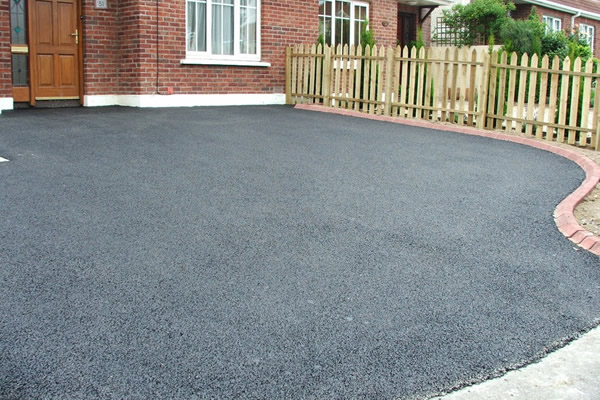Enhancing Urban Connectivity: Tarmac Edinburgh Transport Networks
Nestled within the historic cobblestone streets and modern thoroughfares of Edinburgh lies a material that silently knits together the city’s transport arteries, facilitating seamless mobility for residents and visitors alike: tarmac. In this comprehensive exploration of tarmac’s role in Edinburgh’s transport infrastructure, we delve into its evolution, applications, benefits, and future prospects, highlighting its indispensable contribution to the city’s interconnectedness and accessibility.
Tarmac’s Evolution:
The story of Tarmac Edinburgh is one of evolution and innovation, tracing its roots back to the early 20th century when the pioneering blend of tar and aggregate revolutionised road surfacing. Originally known as tarmacadam, this durable and cost-effective material quickly gained popularity and became synonymous with modern road construction. Over the decades, advancements in materials science and engineering have refined tarmac’s composition and construction techniques, enhancing its durability, sustainability, and versatility for a wide range of applications beyond traditional roadways.
Tarmac Edinburgh Road Infrastructure:
Edinburgh’s road network serves as the lifeblood of the city, connecting neighbourhoods, suburbs, and regions, and facilitating the movement of people and goods. Tarmac forms the bedrock of this network, providing a smooth and resilient surface that withstands the demands of heavy traffic and Scotland’s unpredictable weather conditions. From major arterial routes like the A1 and A90 to local streets winding through historic districts, tarmac ensures safe and efficient travel for motorists, cyclists, and pedestrians alike, supporting Edinburgh’s economic vitality and cultural vibrancy.
Cycle Paths and Footways:
In recent years, Edinburgh has embraced sustainable and active modes of transportation, promoting cycling and walking as viable alternatives to driving. Tarmac plays a crucial role in this initiative, providing smooth and accessible surfaces for cycle paths and footways across the city. From dedicated cycle lanes along main thoroughfares to scenic paths meandering through parks and green spaces, tarmac infrastructure encourages healthy lifestyles, reduces traffic congestion, and enhances the overall quality of urban life in Edinburgh.
Public Transport Infrastructure:
Edinburgh’s public transport network, comprising buses, trams, and trains, relies on robust infrastructure to deliver reliable and efficient services to residents and visitors. Tarmac forms the foundation of key components such as bus lanes, tram tracks, and railway platforms, providing stable surfaces that support the smooth operation of public transport services. Whether it’s the sleek Edinburgh Trams gliding along Princes Street or buses navigating the city’s arterial routes, tarmac infrastructure ensures connectivity and accessibility for all passengers, fostering social inclusion and economic prosperity.
Integration and Accessibility:
Tarmac’s versatility extends beyond individual transport modes to encompass the integration and accessibility of Edinburgh’s transport networks. Multi-modal hubs such as Edinburgh Waverley and Haymarket railway stations feature tarmac surfaces that facilitate seamless transitions between trains, buses, and taxis, enhancing the overall passenger experience and promoting interconnectivity across different modes of transport. Moreover, tarmac’s non-slip properties and tactile paving markings improve accessibility for people with disabilities, ensuring inclusivity and equal access to transportation facilities throughout the city.
Innovations in Tarmac Technology:
As Edinburgh looks towards the future, ongoing innovations in tarmac technology hold promise for further enhancing the city’s transport networks. Research and development efforts are focused on improving the sustainability, durability, and performance of tarmac surfaces, with advancements such as recycled materials, self-healing properties, and enhanced drainage capabilities gaining traction. Additionally, the integration of smart technologies, such as sensors and data analytics, into tarmac infrastructure offers opportunities for real-time monitoring, predictive maintenance, and optimised traffic management, contributing to safer, more efficient, and environmentally-friendly transport systems in Edinburgh and beyond.
Challenges and Opportunities:
While tarmac remains a cornerstone of Edinburgh’s transport infrastructure, the city faces various challenges and opportunities in its ongoing efforts to enhance urban connectivity. Maintenance and funding constraints, coupled with increasing demands for sustainable and resilient transport solutions, present complex challenges that require innovative approaches and collaborative partnerships. However, these challenges also bring opportunities for Edinburgh to pioneer new technologies, embrace alternative transportation modes, and foster community engagement in shaping the future of its transport networks, ensuring that the city remains at the forefront of urban mobility and sustainability.
Adaptive Reuse and Restoration:
In some cases, tarmac can facilitate the adaptive reuse and restoration of historic sites and structures in Edinburgh. By providing stable and accessible surfaces for pedestrianised areas, buildings and public spaces, tarmac enables the revitalisation of neglected areas while preserving their historic significance. Furthermore, tarmac can be used in conjunction with traditional materials such as stone and timber to create harmonious transitions between old and new, enhancing the overall aesthetic coherence of Edinburgh’s built environment.
Conclusion:
Tarmac Edinburgh ongoing quest to create a connected and accessible urban environment, tarmac stands as a linchpin of the city’s transport infrastructure. From its humble beginnings as a road surfacing material to its diverse applications in modern transport networks, tarmac continues to play a vital role in supporting Edinburgh’s dynamic and vibrant character. As the city evolves and embraces sustainable transport solutions, tarmac will remain a trusted and indispensable material, ensuring that Edinburgh remains a model of connectivity and accessibility for cities around the world.

